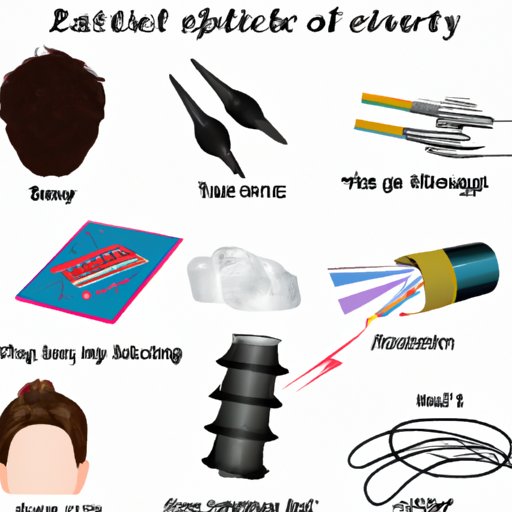
I. Introduction
Have you ever experienced your hair sticking to your face or noticed your clothes clinging uncomfortably to your skin? These are the annoying effects of static electricity. Static is an imbalance of electric charges in an object, and it usually causes these objects to attract or repel each other. In this article, we will explore practical tips, remedies, and products that can help you get rid of static easily and efficiently.
II. Understanding Static Electricity
Static electricity is the imbalance of electric charges in an object. It occurs when an object has either an excess or a deficiency of electrons. When two objects with different degrees of charge come into contact and then separated, the electrons cause a spark, and static electricity is created. This phenomenon is often caused by dry air or friction between objects.
When it comes to clothing and hair, static electricity causes them to cling together because one has a positive charge while the other has a negative charge. Synthetic or wool fabrics tend to generate more static electricity than cotton or silk. Similarly, dry hair, especially in dry air, generates static electricity more easily than damp hair.
III. Practical Tips and Tricks to Reduce Static Cling
Using dryer sheets is a simple yet effective way to reduce static cling in your clothes. Dryer sheets contain positively charged fabric softeners, which neutralize the static charge from negatively charged clothes. Tossing a damp cloth or a few ice cubes in the dryer during the last few minutes of the cycle is another practical solution. As the cloth or ice melts, it creates steam that will eliminate the static electricity. If you prefer to line dry your clothes, hang clothes to dry inside out, which ensures that the outside fabric will be less likely to develop static electricity.
IV. Analysis of Commercial Anti-Static Products
Commercial anti-static products come in different forms such as sprays, anti-static balls, and anti-static sheets. Sprays are a popular option as they are easy to use. Simply spray the product on the fabric before wearing, and the product will reduce static cling. Anti-static balls, which can be added to the dryer, help by reducing friction between clothes. Anti-static sheets are another solution that helps soften clothes and reduce static electricity. These products are convenient to use, but are they effective?
Based on our analysis, commercial anti-static products are generally effective, but some may not work as well as advertised. Some products may contain chemicals that can cause skin irritation or respiratory problems. When choosing anti-static products, always read the labels carefully to ensure that they do not contain harmful chemicals.
V. Use of Natural Remedies to Combat Static Cling
If you prefer a more natural approach, vinegar, baking soda, and aluminum foil can be effective remedies for static cling. Vinegar, when added to the rinse cycle of the washing machine, can soften clothes and prevent static cling. Baking soda, when sprinkled on clothes before putting them into the dryer, can also reduce static charges. Aluminum foil can be used by rolling a ball and adding it to the dryer. It discharges any static electricity in the dryer, thus reducing static cling.
While vinegar and baking soda are safe to use, be careful when using aluminum foil in the dryer, as it can cause a fire in some cases. Always use foil that is free of tears or holes and never use it for more than three times.
VI. Preventing Static Electricity from Reoccurring
To prevent static electricity from recurring, it is best to limit your movements when wearing clothes, or when your hair is dry, as physical movements can generate static charges. Using a humidifier will also add moisture to the air, thus reducing static electricity. You can also avoid synthetic fabrics, as they are prone to generating static electricity more easily than natural fibers. Fabric softeners, both commercial and natural, also help manage static cling effectively.
VII. Conclusion
In conclusion, static electricity is a common phenomenon that can cause inconvenience to clothing and hair. To combat static electricity, there are practical tips and tricks, commercial anti-static products, natural remedies, and preventative methods that can be applied. When choosing products or remedies, always be mindful of their potential side-effects, as well as the safety measures to take. With this information, getting rid of static electricity should not be a problem anymore.
Remember: Always approach static electricity with caution and consider your safety above everything else.





